Silky smooth and not too sweet, Italian Meringue Buttercream Frosting spreads and pipes beautifully. You can flavor and color it as you like to complement or contrast the flavors of your baked goods. Try it on your next cake, batch of cupcakes, or as a filling for macarons!
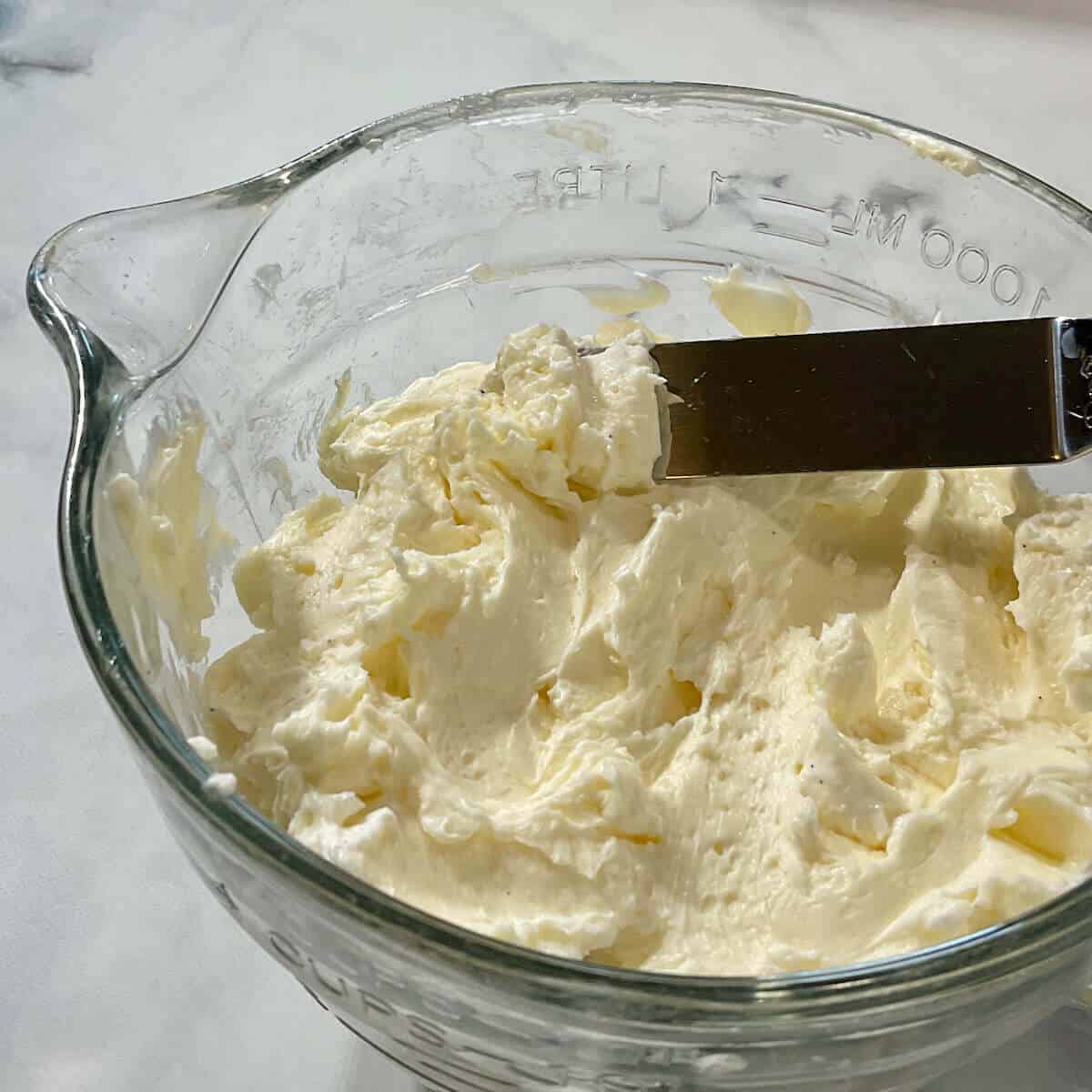
Jump to:
Why this recipe works
- Creamy and luscious Italian buttercream frosting that's not overly sweet
- Easily and beautifully spreadable and pipeable
- Can be flavored and/or colored to complement or constrast with baked goods
If regular ol' buttercream frosting is crossed with whipped egg whites, then takes a trip to Southern Europe, what do you get?
Italian meringue buttercream frosting (aka Italian buttercream frosting). Yes, I know that was kind of labored, but work with me here.
Recipe ingredients
The ingredients for an Italian buttercream recipe are simple enough. It's just as making a straight Italian meringue, then adding butter. Here's what you need:
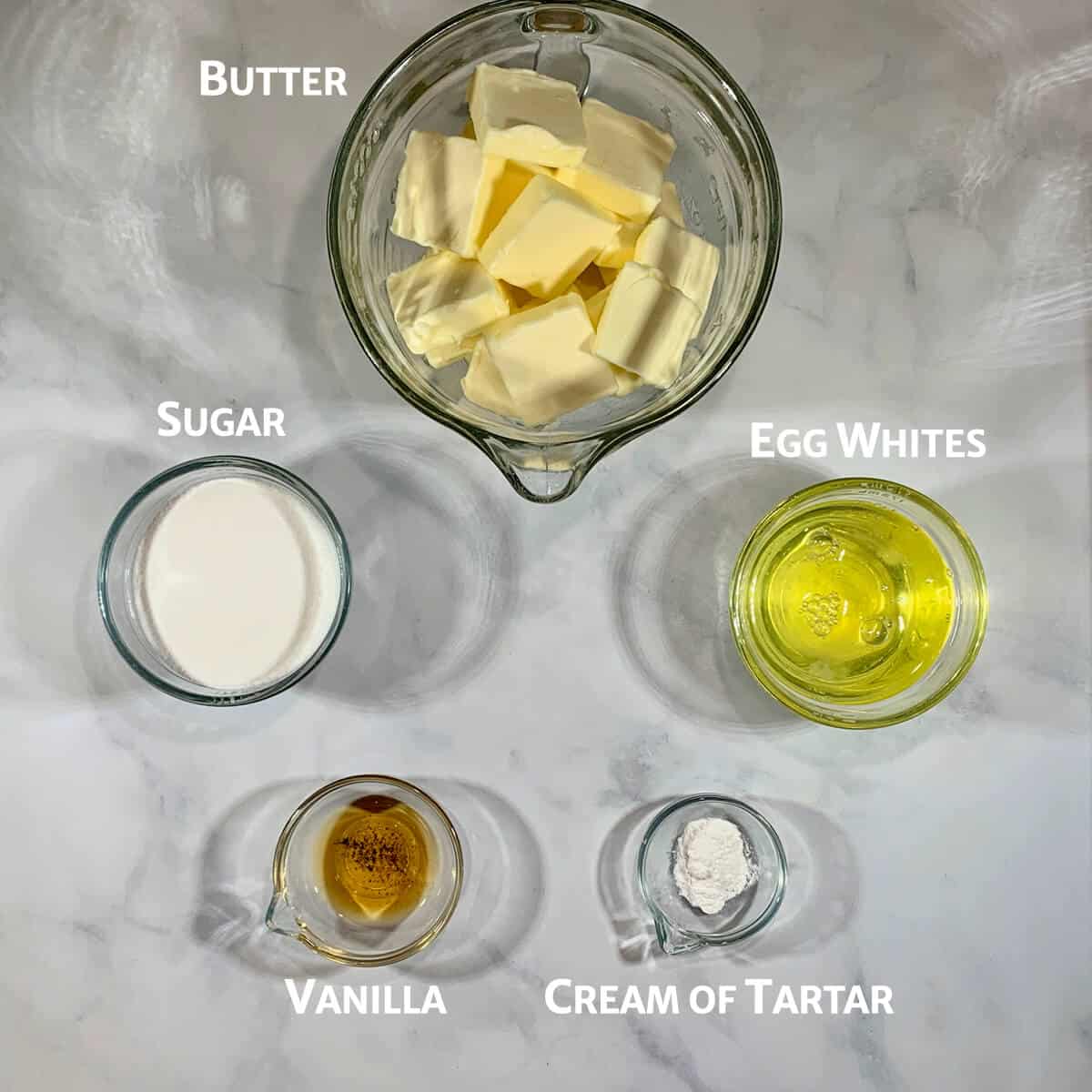
Ingredient Notes
Egg whites: For a successful meringue, the egg whites need to be absolutely free of fat to whip. To make sure there is no yolk, I suggest you separate the eggs over a bowl and dump the whites into another bowl (an egg separator can help). Also, wiping the mixing bowl with white vinegar or lemon juice prior to adding the whites helps to ensure there is no fat in the bowl that can inhibit the meringue formation. This step is optional but highly recommended.
Room-temperature egg whites whip up better than cold egg whites. For room temperature eggs, leave them out on the counter for 1 hour or submerge them in warm water for 5 minutes.
Butter: Having the butter at a warm room temperature allows it to quickly beat up smooth and fluffy. The cooler the butter is, the longer you'll need to beat it to smooth out any lumps. If the butter is very soft, it isn't necessary to cut it first.
Cream of tartar: An acidic dry powder that's a byproduct of winemaking. It's used to stabilize the egg whites as they're being whipped, so you get a fluffier finished meringue. It's optional, but recommended.
Flavorings: You can use a variety of extracts and liqueurs to flavor your Italian buttercream. I have some suggestions for flavoring your buttercream below.
Food coloring: If you want to color your buttercream, gel food coloring works best because it won't thin the product.
See the recipe card for a full list of ingredients and measurements.
How to make Italian meringue buttercream
The method for making an Italian buttercream frosting recipe goes in two stages, make the Italian meringue, then beat in butter.
For an Italian meringue, you need to work concurrently to heat the sugar syrup and beat the egg whites. Ideally you want the whites to be whipped to stiff peaks just as the syrup comes to temperature.
Step 1: Make the sugar syrup
As with making caramel, sugar can crystalize if stirred while boiling. Give the sugar and water a quick stir just to moisten the sugar, then leave it to boil.
Heat the sugar syrup to firm-ball stage, between 248°F to 250°F (photo 1). It's best to use a digital thermometer or candy thermometer to be precise. If the syrup is done before the meringue is ready, add a very small amount of hot (not cold) water to lower the temperature slightly.
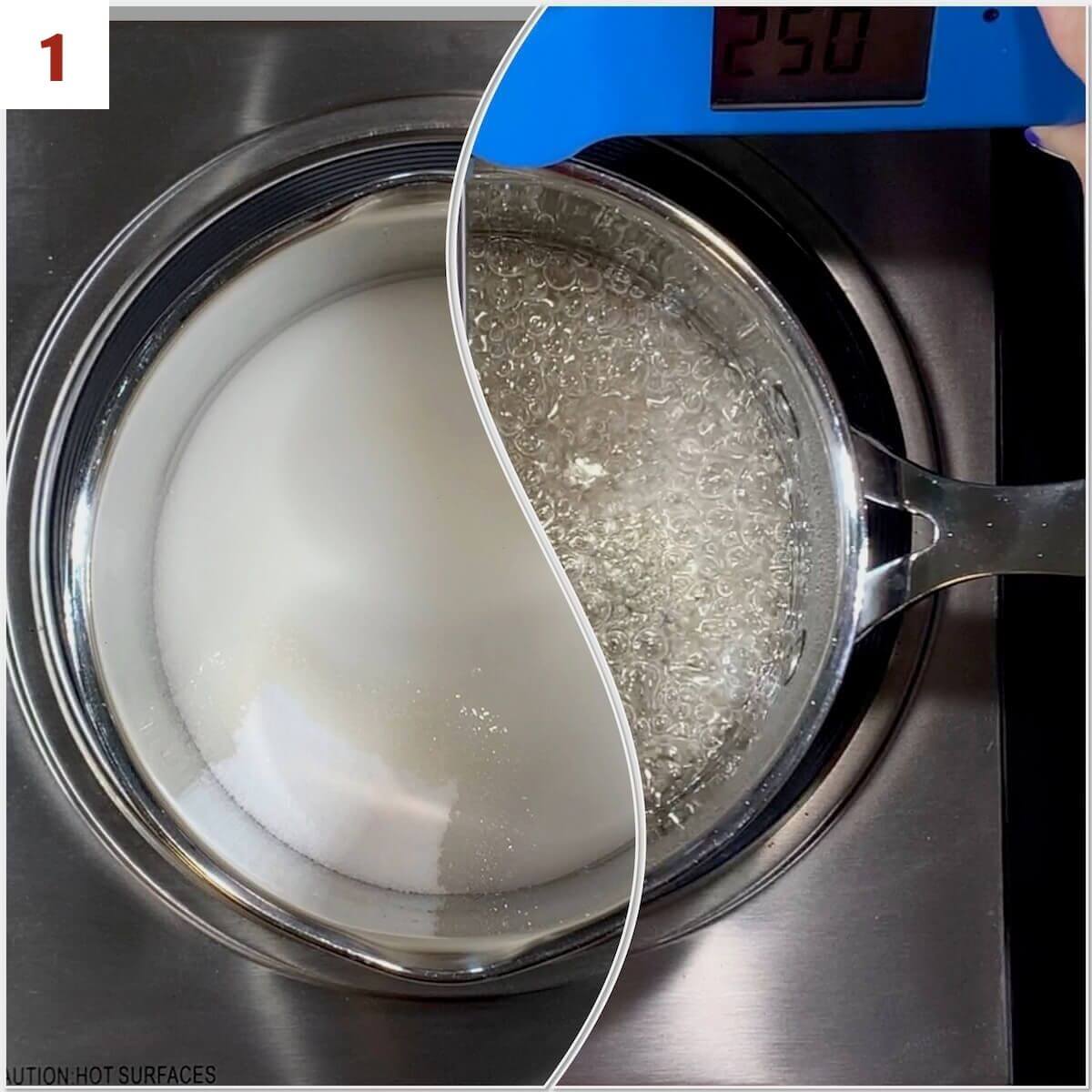
Step 2: Whip the egg whites
As soon as the sugar syrup starts to boil, it's time to start whipping your egg whites. When they're fluffy, add the cream of tartar and 1 tablespoon of sugar, then whip them to stiff peaks (photo 2).
Don’t overwhip or the meringue can start to separate. If it’s ready before the sugar is to temperature, turn the mixer to the lowest speed and let it continue to run.
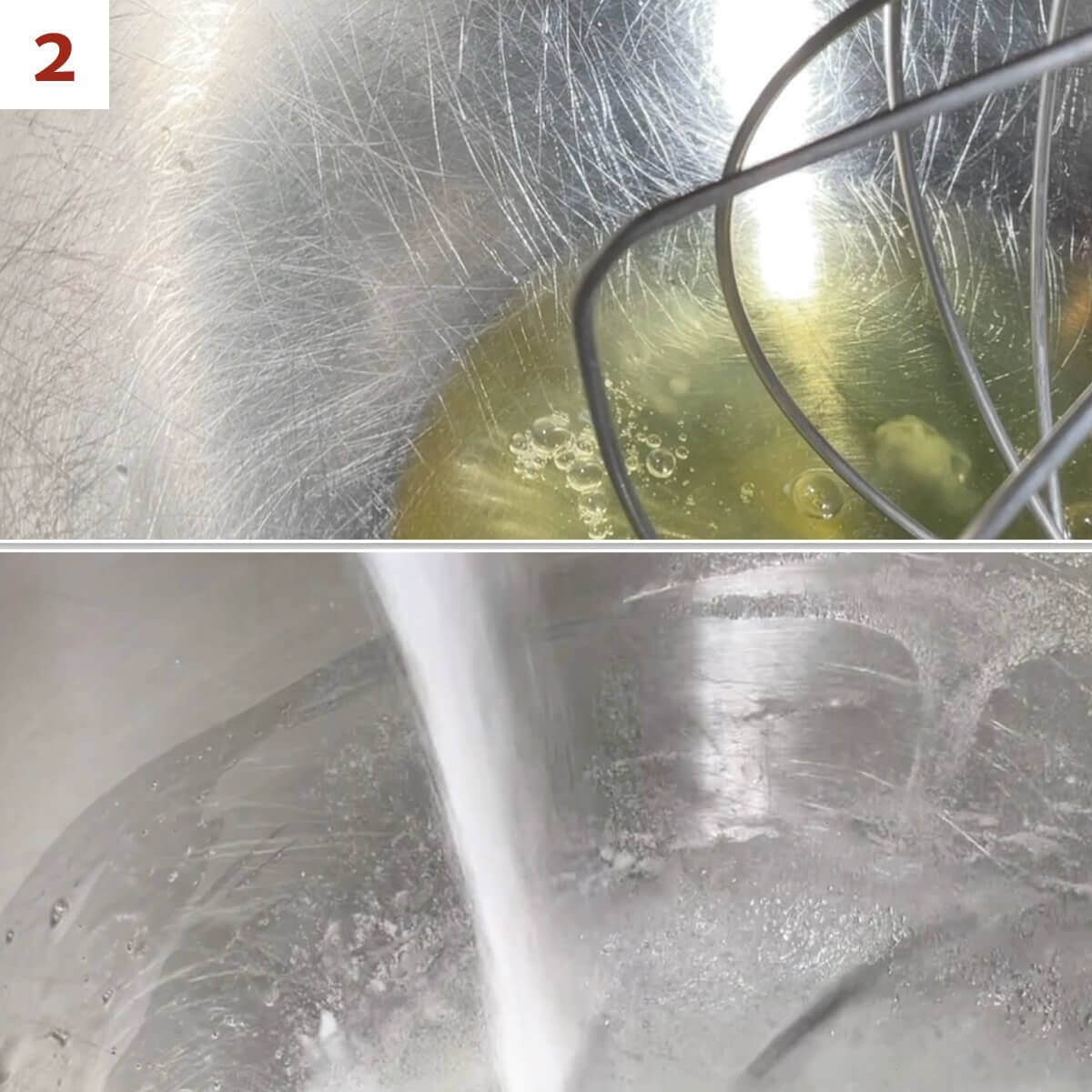
Step 3: Slowly stream in sugar syrup
When the syrup and meringue are both ready, pour the hot syrup into the meringue in a thin, steady stream along the side of the bowl while the mixer is running (photo 3). This is now Italian meringue, and will be beautifully thick and glossy.
Continue beating until the bottom of the bowl feels cool to the touch. The meringue needs to be completely cooled before adding in the butter.
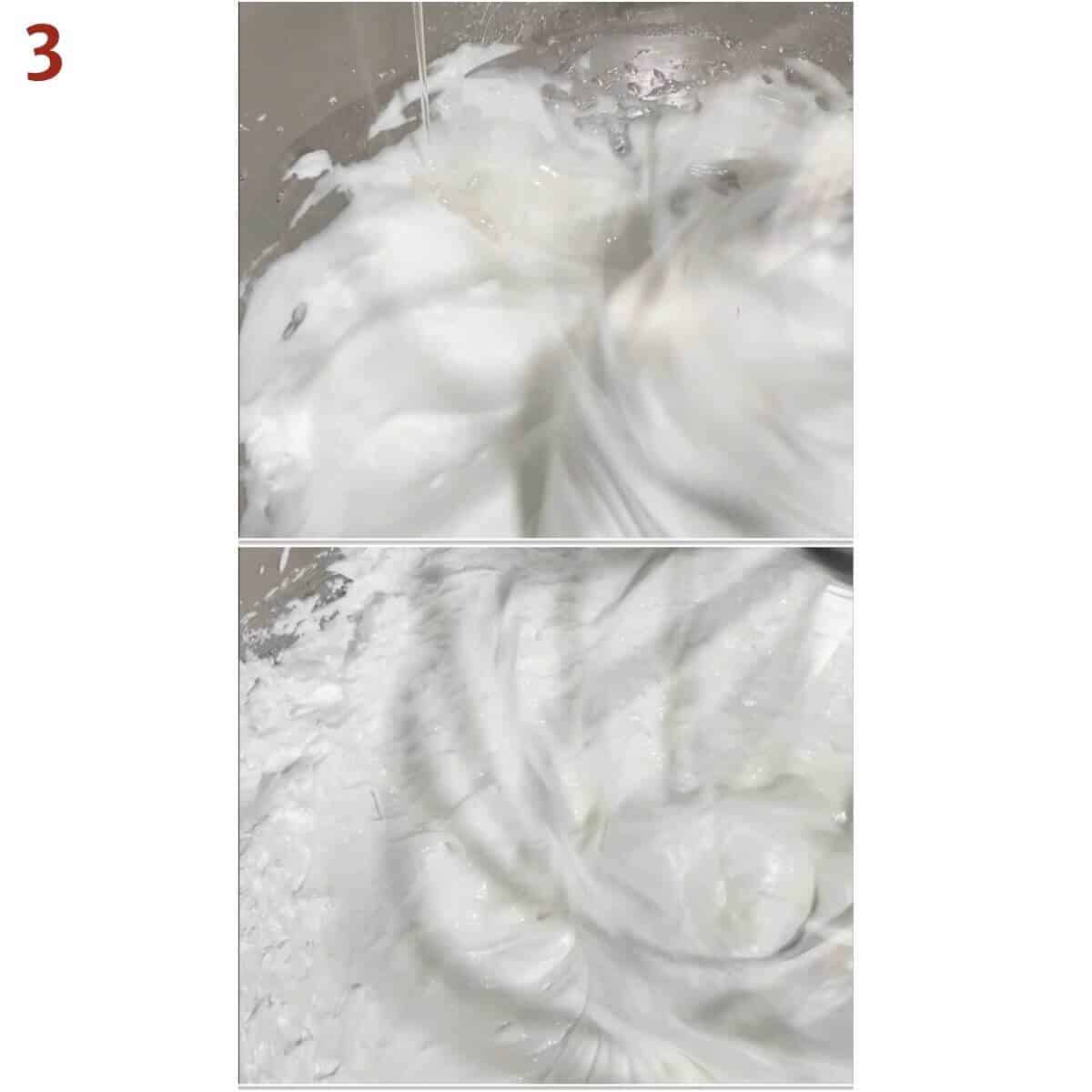
Step 4: Add the butter and flavoring
Italian buttercream is an emulsion, like Hollandaise sauce or Caesar dressing. You need to achieve a stable mixture of fat and water. In this case, you want the butter to be at room temperature so it will mix in easily, but not too soft that it melts before it's incorporated.
After the meringue has cooled completely, slowly add the butter two tablespoons at a time (photo 4). Make sure the butter is almost completely incorporated before adding more.
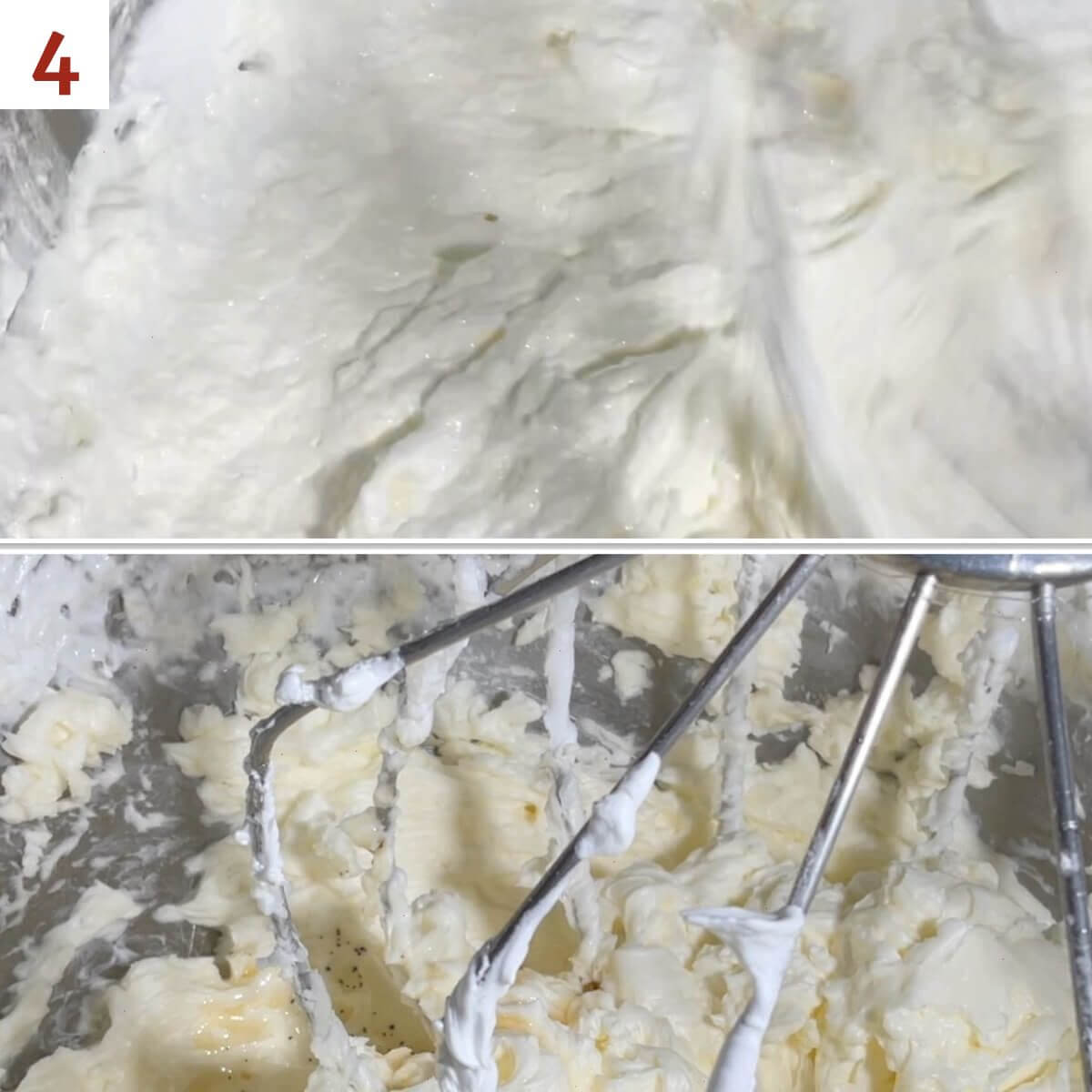
Storage instructions
You can make the buttercream ahead of time and store it in the refrigerator for a week or freeze it for up to 2 months. Bring it to room temperature then beat to a smooth consistency before using. If it’s frozen, allow the buttercream to defrost overnight in the refrigerator before having it sit out on the counter.
Flavoring your Italian Buttercream
After all the butter is added and the frosting is smooth, add your flavors and colors. If you want to color your buttercream, gel food coloring works best so you don't water down your frosting.
Here are some flavoring suggestions:
- Vanilla: 1 tablespoon vanilla extract
- Chocolate: 1 cup (170g) melted chocolate or chocolate ganache
- Lemon: ¼ cup lemon curd or 2 tablespoons lemon juice with 1 teaspoon vanilla extract
- Mint: 1 teaspoon mint extract
- Vanilla Orange: 1 teaspoon Fiori di Sicilia or to taste
- Coffee: Dissolve 1 tablespoon of espresso powder in 2 teaspoons boiling water and let cool.
- Kahlua or another liqueur: 2 to 4 tablespoons or to taste. Remember though, the buttercream is no longer kid-friendly.
Questions asked and answered
Here are some questions that you might have...
In general, a meringue is a mixture of whipped egg whites with sugar. There are three types of meringue: French, Italian, and Swiss. Each type varies based on preparation, texture, and stability.
The easiest type of meringue to make is a French meringue, i.e. egg whites beaten until fluffy and sweetened with sugar. When baked, French meringues are firm, yet fragile and crumbly. French meringues are used in desserts like Pavlova or Eton Mess, and also form the basis for French Macarons.
In Italian meringue, the sugar is boiled into a syrup before adding it to the whipped egg whites. As it's slowly added to the bowl, the egg whites cook, giving the resulting meringue a sturdier structure that's less brittle than French meringue. When baked, Italian meringues have a softer, marshmallowy texture. In fact, Marshmallow Creme (aka Marshmallow Fluff) is a form of Italian meringue. This Italian merigue method can also be used as the base for buttercream frosting.
There's also Swiss meringue, where the egg whites and sugar are slowly heated together so that the sugar dissolves egg whites. Then the mixture is whipped until light and fluffy. It's texture is softer, yet denser than an Italian meringue, and can be used in the same ways as the others. In terms of structure, Swiss meringue falls between the French and Italian versions.
The easiest frosting to make is a buttercream frosting (aka American Buttercream). That's just butter that's been whipped until it's light and creamy, then sweetened with powdered sugar. Flavored with vanilla extract, and you get vanilla butter frosting. Adding melted chocolate gives you chocolate buttercream frosting, which is a dream unto itself.
So why do you need to go to the extra trouble of making an Italian meringue first?
Well, while American buttercream is luscious, it can also be cloyingly sweet, and even gritty if the sugar isn't fully incorporated into the butter.
With an Italian meringue buttercream recipe, the meringue adds its sweetness without being overpowering, resulting in frosting that's smooth and creamy without being overly sweet. Also, the sugar is cooked in, so there's no risk of grittiness at all.
Yes! The sugar syrup heats the egg whites above the 160°F threshold needed for cooking as it's streamed into the bowl, making the frosting safe to eat.
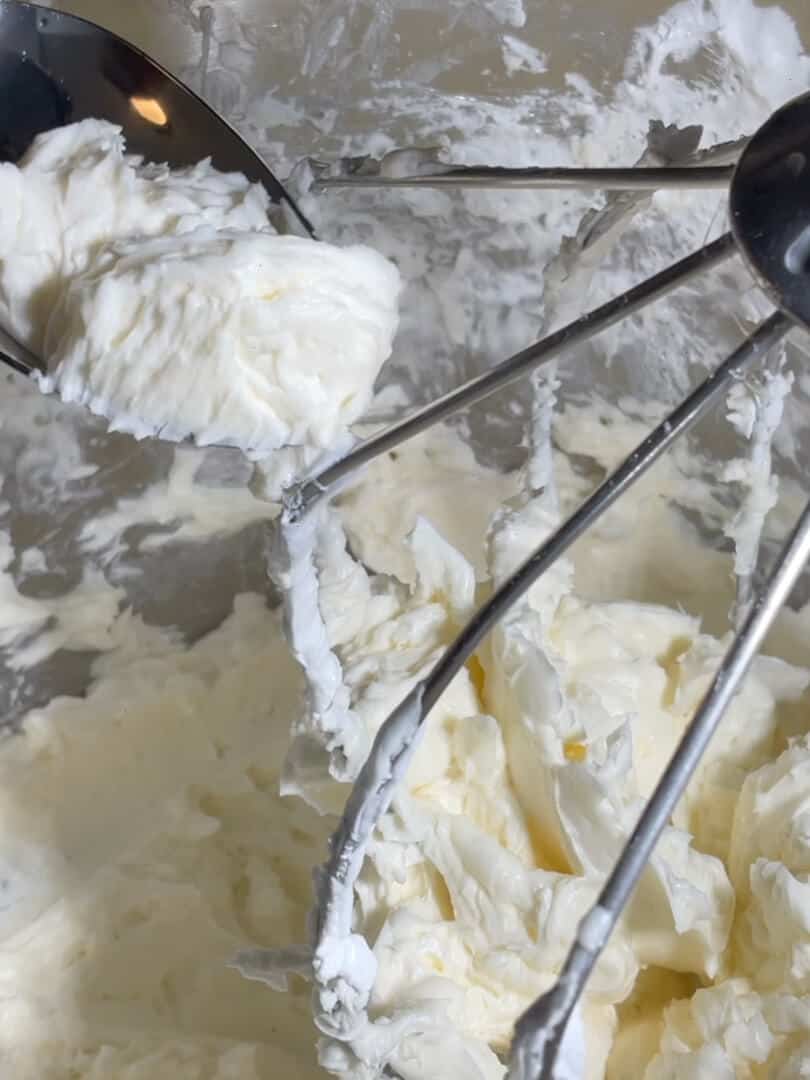
What can go wrong with Italian buttercream
Even if you're really careful and precise while making an Italian buttercream recipe, things can go wrong.
I'm of course not speaking from personal experience. ( * cough * )
Here are a couple of tips for correcting any mishaps.
- If the buttercream looks curdled or runny, the butter has melted because the meringue is too warm. Place the mixing bowl in the refrigerator for about 15 to 20 minutes, then return to beating until the buttercream is smooth.
- If the butter doesn’t mix well into the meringue, either the butter or the meringue are too cold. Hold a heating pad set to medium-high onto the bowl while beating. You can also use a hair dryer set to warm, blowing around the bottom of the bowl.
It's worth the effort
Italian meringue frosting is creamy on the tongue, but doesn't feel like your tongue is coated in butter. Sweet but not cloying, it will enhance whatever you're using it for.
Here I've spread Vanilla Italian buttercream on a simple chocolate cake that's been filled with Chocolate Italian buttercream. It's a blank canvas just waiting for decoration.
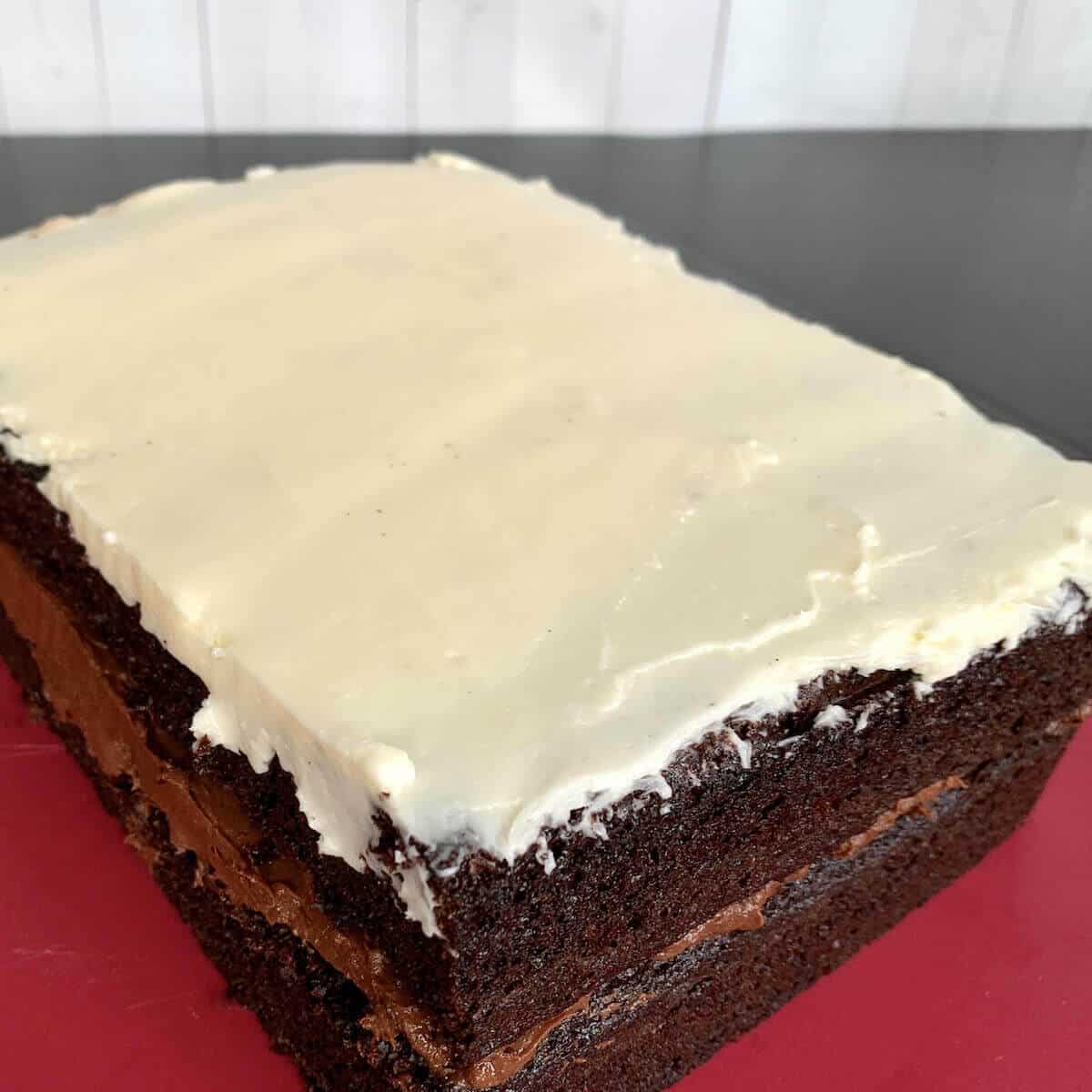
Silky smooth, easy to spread and pipe, this frosting is perfect for your next cake, batch of cupcakes, or as a filling for macarons.
Italian Meringue Buttercream Frosting is greater than the sum of its parts!
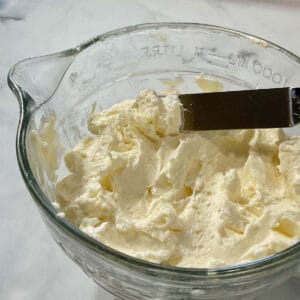
Italian Meringue Buttercream Frosting
Ingredients
- ¾ cup sugar, divided
- 1 teaspoon white vinegar, or lemon juice, see Recipe Notes, optional
- 4 large egg whites, at room temperature, see Recipe Notes
- ¼ cup water
- ½ teaspoon cream of tartar, optional
- 1½ cups butter, at room temperature
- flavorings, see Recipe Notes
- food coloring, see Recipe Notes
Instructions
- Remove 1 tablespoon of sugar and set aside.
- Wet a paper towel with white vinegar or lemon juice and wipe the bowl of a stand mixer. Place the egg whites in the bowl and fit the mixer with the whisk attachment.
- In a small saucepan, combine the remaining sugar and water and stir. Place the pan over medium high heat and boil until it reaches firm-ball stage (248 °F to 250 °F). Do not stir the sugar while the mixture heats as that can cause the sugar to crystalize.
- When the sugar starts boiling, begin beating the egg whites on a medium speed until frothy. Sprinkle in the cream of tartar (if using) and the 1 tablespoon sugar. Increase speed to medium high and beat until stiff peaks form. Don’t overwhip or the meringue can start to separate. If it’s ready before the sugar is to temperature, turn the mixer to the lowest speed and let it continue to run.
- When the syrup and meringue are ready, pour the hot syrup into the meringue in a thin, steady stream along the side of the bowl while the mixer is running. Continue beating until the bottom of the bowl feels cool to the touch, and is thick and glossy. The meringue needs to be completely cooled down before adding the butter.
- With the mixer running at medium speed, add the butter 2 tablespoons at a time. Beat until each addition of the butter is mostly incorporated before adding more. The buttercream may start to look curdled, but it should smooth out. See the Recipe Notes for troubleshooting tips.
- After all the butter has been fully incorporated, add the flavorings and or food colorings of your choice. Your Italian Meringue Buttercream is ready!
- Storage Instructions: You can make the buttercream ahead of time and store it in the refrigerator for a week or freeze it for up to 2 months. Bring it to room temperature then beat to a smooth consistency before using. If it’s frozen, allow the buttercream to defrost overnight in the refrigerator before having it sit out on the counter.
- This recipe will easily frost 12 cupcakes. Double it for a standard 9-inch layer cake.
Notes
- Vanilla: 1 tablespoon vanilla extract
- Chocolate: 1 cup (170g) melted chocolate or chocolate ganache
- Lemon: ¼ cup lemon curd or 2 tablespoons lemon juice with 1 teaspoon vanilla extract
- Mint: 1 teaspoon mint extract
- Vanilla Orange: 1 teaspoon Fiori di Sicilia or to taste
- Coffee: Dissolve 1 tablespoon of espresso powder in 2 teaspoons boiling water and let cool.
- Kahlua or another liqueur: 2 to 4 tablespoons or to taste. Remember though, the buttercream is no longer kid-friendly.
- If the buttercream looks curdled or runny, the butter has melted because the meringue is too warm. Place the mixing bowl in the refrigerator for about 15 to 20 minutes, then return to beating until the buttercream is smooth.
- If the butter doesn’t mix well into the meringue, either the butter or the meringue are too cold. Hold a heating pad set to medium-high onto the bowl while beating. You can also use a hair dryer set to warm, blowing around the bottom of the bowl.


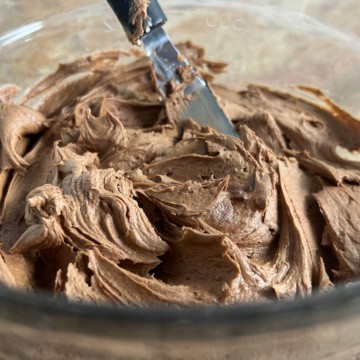
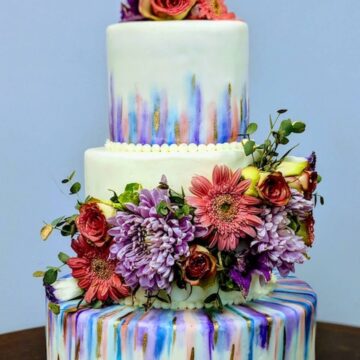
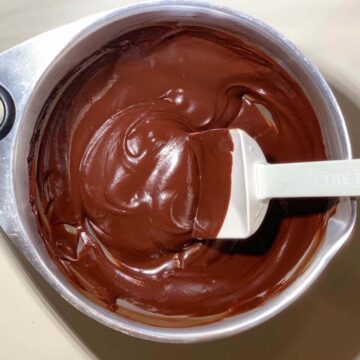
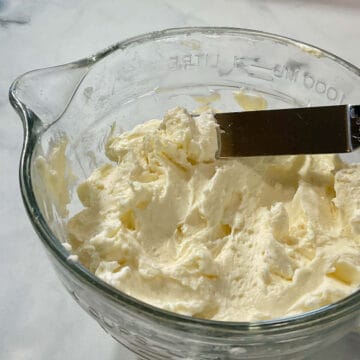
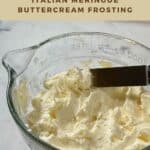
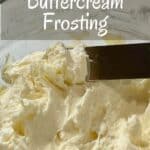
Rachel says
I saw that a cup of chocolate ganache can be added to the buttercream. How many cups of the buttercream is the 1 cup of ganache being added to? Thanks.
Tammy Spencer says
Hi Rachel, the 1 cup of melted chocolate or ganache is added to the meringue after the butter has gone in, which is about 3 cups of frosting at that point.
Rachel says
Thank you so much!
Peachy says
I really appreciate your tips and images. My cakes are lemon and I hoped adding my homemade lemon curd and limoncello would make it more tart. I baked cupcakes in dollar tree martini glasses and prefer the lightness of this rather than a heavy buttercream. This is delightful. Your instructions are wonderful!
Tammy Spencer says
Hi Peachy, thanks for your kind words. Your limoncello-flavored frosting sounds delish! Happy baking 😉